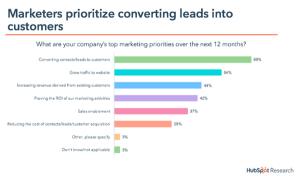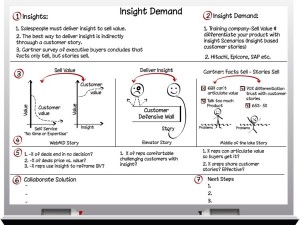
The rules of a twitter advertising strategy are changing. When you use Google to find information, how often do you filter the results by date? What about when you’re searching for advice about online marketing? If you’re anything like me, nearly all of your searches will have the option enabled.
The trouble with marketing guides, especially those about advertising, is that they have a short shelf-life. The world of digital marketing experiences change at a speed not seen in other industries. When you’re dealing with topics like SEO, social media, blogger outreach or any of the other myriad forms of online promotion, an idea or tactic that was relevant one week ago might be redundant today.
As this guide is about twitter, let’s take a relevant example. At some point over the next few months, conversational ads, which are currently in beta, will be rolled out. In a nutshell, they’re a type of interactive ad that gives users the opportunity to answer a question by clicking on a hashtag call-to-action. If they do choose to answer, it’s automatically tweeted on their account.

(Source)
This example highlights how important it is for marketers to stay up to date. The possibility of further change is reinforced by the fact that twitter’s growth has stalled somewhat. Because of this, it’s likely that advertisers will see a host of new features becoming available over the next few years as the social media giant seeks to reignite user uptake. That’s just a prediction, of course, but it seems to be justified in light of the new ad format outlined above.
Reading twitter’s “Advertiser Blog” will go some way in helping, but you should also be funneling insights derived from your own testing processes back into your overall strategy, a topic I’ll cover later in the post.

(Source)
1. Twitter Users are Young, Educated and Wealthy
Though it’s one of the world’s most widely used advertising channels, there are still opportunities for marketers on twitter. The majority of users are wealthy, tech-literate, educated millennials. In other words, the ideal customers for most kinds of digital offering, especially SaaS.

(Source)
There are also many case studies of companies that have run successful campaigns. Poo-Pourri achieved $ 73,000 in sales by targeting the followers of influencers and those with similar interests. LG, on the other hand, used a quirky giveaway to quadruple their smartphone sales.

(Source)
2. Craft a plan
Your initial plan is the most important part your strategy. It will determine which ads you use and how you measure their success. It should include several key elements: your overall goals, your customer profile, an understanding of the key influencers and an editorial calendar.
3. Determine your goals
You would be amazed at the number of marketers that adopt a haphazard approach to running their twitter profiles. Decide early on what the key goal(s) behind your twitter activity is going to be. Answering the question, “Why am I tweeting?” will enable you to build optimized campaigns. The answer will also point to the kind of people to target, the ads that you pick, the content that you will craft and the metrics that you will use to gauge your success.
The following examples are common goals:
- Generate leads.
- Drive more general awareness for your brand.
- Use your profile act as an addition to your content marketing efforts, working to increase the reach of your blog posts, videos and guides.
- Promote special offers to new potential customers.
Your choice of goals will tie in directly with how you run your campaigns, so it’s vital that you’re clear on them. Using SMART criteria to guide the goal-selection process will mean that you don’t end up being too general. In the early stages the idea is to find a middle-ground between broad and specific goals that are able to feed into specific choices about ad types.

(Source)
You’ll also need to consider specific campaign options in the context of your general goals. If you’re seeking leads, for instance, you may want to garner website visitors, whereas Tweeting to augment your content strategy will likely involve promoting ads designed to drive engagement.
Twitter currently offers the following campaign goals, which we’ll explore in a little more depth in a moment:
- Followers
- Website Clicks or Conversions
- Tweet Engagements
- App Installs
- Leads (Email Signups)
- Video Views
4. Define your customer profile
In order to effectively make use of twitter’s many targeting options, you first need to have a clear picture of the kind of person that you want to reach. This will allow you craft a tightly-focused content strategy (the material that you tweet) when you come to putting together your campaign.

(Source)
The following information will help you to develop a robust picture of your ideal twitter user:
- Demographic information: The Audience Insights tool, which is available through the advertiser dashboard, is an incredibly powerful tool for gathering demographic data. Information about age, location, gender etc. is all available. Data about your current audience (your client base, blog readers, current twitter followers ec.) can also help to build a clear profile.
- Psychographic information: This is where you need to highlight the particular pain-points and preferences of your intended user, along with the questions that they typically ask. Following conversations and influencers across Twitter can provide a wealth of information in this respect.
- Common behaviours: Finally you want to discover which specific behaviours characterize your target group. Which formats do they prefer to consume content through? When are they usually most active? What tone/style/structure do they tend towards.
5. Monitor Influencers
Copying the success of your competitors is a time-tested way of improving results. On twitter, this tactic is incredibly easy to implement. By monitoring the tone, substance and differing levels of engagement of your competition’s content, you can steal what’s working to improve your own approach.
Analytics tools like BuzzSumo can help you to put together a list of major influencers in your niche or industry.
6. Implement a flexible editorial calendar
Finally, you want to assemble a structured editorial calendar. Having one will allow you to set clear principles to guide content creation whilst also maintaining the level of consistency without which proper testing is virtually impossible
When designing your calendar, keep in mind the following points for timing your posts:
- Between 12PM and 3PM is the best time to post.
- Weekdays are the best time to post for B2B companies. (Source)
- Wednesdays and weekends are the best days to post for B2C companies.
- Click-through rate is highest on Wednesdays. (Source)
7. Understand Ad Formats
The important point to remember about different ad formats is that many of them are designed to achieve similar results. You can, for instance, acquire new followers through promoted accounts, promoted tweets or cards. Because of this, it’s vital that you’re testing the ROI of various ads that are meant to generate the same outcome.
The following is a brief rundown of ad types:
- Promoted Tweets: These are simply normal tweets that are promoted to new users. They can be particularly useful for increasing the reach of tweets that have already done well with your own followers.

(Source)
- Promoted Accounts: Promoted accounts, which are designed to increase followers, appear in the “who to follow” widget and on users’ home timelines.

(Source)
- Website Cards: Designed to drive traffic, website cards are similar to normal tweets but include a photo, a headline and a “read more “ button.

(Source)
- Lead-Gen Cards: These allow Twitter users to subscribe to your email list with a single click of a button. They’re a very effective way of building your subscriber list.

(Source)
- App Cards: You can drive app downloads with app cards. Clicking on the call-to-action takes the user to the app store where they’re able to install. There is space for an image, an app rating, a description, and an icon.

(Source)
- Video Ad: You can include videos, sound clips or GIFs in these ads. There isn’t a direct call-to-action so the idea is that users watch your content and then click through using an in-text link.

(Source)
- Promoted Trends: If you have enough money to spend, you can buy a spot in the “trending” widget.

(Source)
8. Use Advanced Targeting Features
The real power of social media advertising on big platforms like twitter and Facebook comes from the mix of huge audiences and incredibly specific targeting features.
Finding your “sweet spot” as an advertiser, where you are able to achieve and maintain a positive ROI in the long-term, will involve a combination of using the right ad formats and targeting the right audience segments. The twitter campaign manager includes the following targeting options:
- Keyword matching: After you have uploaded a set of keywords, twitter will search for tweets containing them and show your ads to the users responsible for writing them. Interestingly, twitter can exclude those users that have used your keyword disparagingly.
- Followers: This feature allows you to target the followers of influencers, companies and initiatives.
- Email lists: Suppose that you recently promoted a product to your email list. How could you reach out to those that didn’t buy? One way could be to upload their emails to twitter, who will match their accounts and target them directly.
- TV targeting: A feature with which you can target people who watch certain TV shows.
- Remarketing: Similar to Facebook’s remarketing function, twitter’s “website visitors” option allows you to target users who have previously visited your site. You can even connect with people based on specific pages that they have viewed. Selling an enterprise-level product? All you need to do is target those users that have read related blog posts.
- Event targeting: Although a relatively recent addition, event targeting allows you to reach people involved with current events.
- Exclude features: I don’t see many people talking about the exclusion option, which is a great shame because it has a lot of potential. One of the best ways of optimizing an audience is to selectively limit poorly-performing sections. You can also use this feature to avoid targeting your own followers.
9. Craft Share-worthy Content
Data has shown that Twitter users prefer certain types of content. Though it’s always difficult to come up with a one-size-fits all approach to content production, information such as that shown in the graph below can be used to lay the groundwork for your own testing.

(Source)
The following tips have all been backed up by case studies and research:
- Copy what’s working for big influencers in terms of content formats and substance.
- Engage in conversations by replying to tweets, including followers and connecting with influencers.
- Keep it conversational.
- Include elements controversy as they are always popular, but only when it’s appropriate to do so.
- Use “power” words, as shown in the graph below.

(Source)
- Stick to 100 characters long. Research has shown this to be the ideal length.
- Always use images as tweets that include them perform better.
10. Always be Testing
It’s important, right from the start, to link your ad spend to specific business goals. You should be making use of conversion tracking from the get-go. It’s an incredibly simple tool that only requires a few lines of code installed on your website. You can then attach specific outcomes – purchases, downloads, sign-ups etc – to campaigns geared to conversions.
The same principle applies to split-testing. It’s incredibly easy to run similar ads with minor alterations and see if there is any change in engagement levels. Campaigns can also be targeted at different audiences, events and behaviours.
Any of the following metrics may be useful for gauging a campaign’s success:
- Increase in number of followers.
- Follower engagement.
- Overall reach (this is good for testing different types of content).
- Click-throughs to posts.
- On-site email sign ups.
- Product purchases.
11. Joint promotions
This has to be one of the most underutilized tactics across all social networks, not just twitter. The basic premise is to offer to promote a user’s account or website if they do the same for you. Having a continuous outreach campaign of this nature, where you’re regularly reaching out to those users with followings of a similar size to your own, can be highly successful.
12. Include partners in paid promotion
Following on from the tactic above, one way of “sweetening the deal” is to offer to include potential partners in a paid advertising campaign. This is a more exclusive strategy that should only be targeted at a handful of influencers.
13. Free lead-gen cards
Lead-gen cards, described above, can be distributed to your current users for free. This strategy works best in conjunction with a regular promotion, such as a free giveaway.
14. Influencer tweets
Celebrities and influencers have been an essential form of modern advertising. Brands can reach out to these influencers to work on sponsored content that will fit in with their audience. *Note a disclosure message must be included.
Wrapping Up
Effective twitter marketing can drive significant increases in revenue. With 310 million users, the platform is the world’s second largest and advanced targeting options give marketers access to numerous audience segments. The key is in defining clear goals, choosing the right ad formats, crafting engaging content and then measuring the results to achieve a viable ROI.
The fact that growth has been stalling has also caused twitter to release a range of new innovative ad formats. Marketers who are ready to take advantage of these will be much better placed to profit over their competitors.
Digital & Social Articles on Business 2 Community
(132)
Report Post







